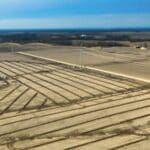While big agriculture businesses have been using geospatial data to their advantage for a while now, we’re only starting to see the tools to use this data go mainstream among growers. There are robust choices now, and it’s wise to use an independent platform that doesn’t sell or use farm data, but focuses on enabling growers and their advisors to get the most out of it.
In addition to the obvious benefits of collecting and using farm data for improved financial performance through increased yields, decreased costs, stronger soil, better irrigation, and fertilizer controls – there are emerging areas of interest for farmers to consider.
“While geospatial data is excellent for improving field performance and to lessen the effects of in-field variability, actual farm records such as financial, inputs and operations data are needed for multi-year farm performance analyses and to calculate potential future scenarios on the farm,” says Doug Fitch, CEO of the global data management platform Agworld.
“Being able to improve field performance yields obvious results such as increased yield or decreased costs. But with an increased risk of droughts for example, combined with an estimated cost in the United States of $9.5 billion according to government statistics, growers will need better analysis tools to help them be well-prepared. And it’s not only extreme environmental events but also commodity price fluctuations and other macroeconomic factors that growers can prepare better for if they are able to plan their season based on accurate financial performance indicators from past years.”
To read the full article on how actual growers are visualizing data to maximize the benefits, and ultimately, the payoff, click here.
Contact a K·Coe Isom Farm Management Services expert to learn more about how we help growers to analyze critical whole-farm data, and optimize the financial performance of the farm as a whole: Alan.Grafton@kcoe.com.










